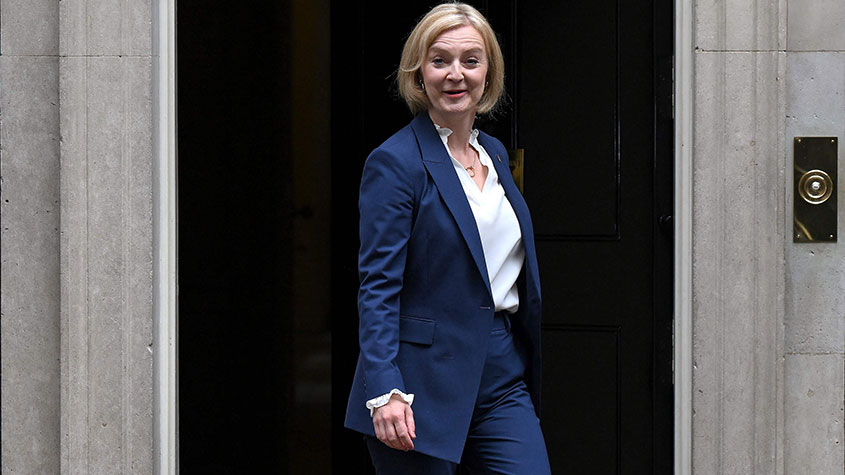Spread betting: five tips for would-be traders
Spread betting stocks can be tempting – but for many, it’s ruinous. Michael Taylor of Shifting Shares looks at how to avoid the pitfalls.

The sort of volatility we’ve seen during the coronavirus outbreak tends to draw new traders to the stockmarket like moths to a flame. Spread-betting firm IG Index recently reported an influx of 22,500 clients in just 36 days. The problem is, most new traders are ill-prepared to cope with the realities of trading. Understanding the five concepts in this article won’t turn you into a stockmarket wizard overnight, but it might help you to avoid being the proverbial moth – and give you a better idea of whether trading would suit you or not.
1. Position sizing: don’t bet the house on one stock
The two most important concepts to understand before trading are “position sizing” and “risk management”. The size of your positions determines your level of risk – your potential capital loss. Many new traders pile in with a large percentage of their portfolio, which is their first mistake. They then see those positions gradually eroded, because new traders aren’t prepared to cut their losses. This is their second mistake. “The first cut is the cheapest” is one of the best-known market mantras for a reason. Of the traders I know who have blown their accounts, every single instance was due to having either too much exposure to one position, a failure to cut losses early, or both.
The goal when position sizing is to make your position big enough to mean something, but not large enough to do serious damage. You will inevitably get hurt when trading. Avoiding overexposure to any one position is the only way to significantly mitigate the very real risk of blowing your account. I never put more than 10% of my total account into a single stock – not even for a short-term trade. For example, many traders piled in after seeing the directors of beer, wine and spirits supplier Conviviality buying the stock in March 2018 in the wake of a profit warning– yet just four days later the listing was suspended and eventually the share price was written down to 0p. The total loss of 10% of a portfolio is painful – but it’s not fatal.
MoneyWeek
Subscribe to MoneyWeek today and get your first six magazine issues absolutely FREE

Sign up to Money Morning
Don't miss the latest investment and personal finances news, market analysis, plus money-saving tips with our free twice-daily newsletter
Don't miss the latest investment and personal finances news, market analysis, plus money-saving tips with our free twice-daily newsletter
A further trick with position sizing is to scale your positions. When you’re winning consistently, you want to be gradually increasing your position sizes in order to compound your account faster. For example, if your overall portfolio grows by 10%, you can increase your position sizing by 10% too. Remember, however – this is even more critical when losing. By scaling down your accounts when losing, you increase the number of trades you can place before you blow your account. Remember: capital preservation is key in this business. Downside risk must always come first.
2. Risk management: always know the downside
The size of your positions may vary depending on the placement of your stop-loss (the point at which you will exit the trade if it is going against you), but you should aim to keep the risk per trade a consistent size. If you are not consistent about how much money you can lose on any one trade, then how can you expect to make consistent profits? Losing isn’t a choice – but the amount you lose is always a choice. If you can keep your nicks and cuts small, and minimise your risk each time, then you give yourself the opportunity to stay in business.
Here’s an example. Say we have two trading positions of £2,000 and £4,000, with a 10% stop on each. In trade one we will lose £200, and in trade two we’ll lose £400. However, in some positions, a looser stop will be required. If “support” (a technical analysis term referring to a level at which the share price has historically rebounded) is 15% away and we are running a 10% stop, then it’s likely we’ll be flushed out of the position.
To adjust our position size for risk, we first take our monetary risk on the trade (the amount that we are prepared to lose on the position) and divide this by the difference between our entry price and intended exit price (or stop loss). This gives us the number of shares that we need to buy.
So say we wanted to buy shares in Sammy’s Sandwiches at 20p and if it falls to 16p, we’ll cut our losses. This would give us 4p risk per share (the difference between the entry and exit). Now say we want to risk a maximum of £500 on the trade. Our calculation would be £500 / 4p = 12,500 shares to buy. Using this calculation, you can keep your risk constant, while adjusting your position sizes for better entries.
3. Be consistent
One of the most poorly understood aspects of trading is this: you need to be consistent in order to be successful. Many get-rich-quick marketers push the idea that traders can work whenever they want, wherever they want (I discussed this in my previous MoneyWeek article looking at scam artists promoting binary options “signal” schemes). However, while the market gives potential traders unlimited freedom and creativity of expression – which is one of its most attractive features – the reality is that you are restricted. You must focus your creativity in certain areas. The best traders follow the same routine, day in, day out, and they’ll trade the same set-ups over and over again. Many spread-betting providers have flashing lights all over their platforms, designed to entice you into taking a position. But trading is about working outside of market hours and the mechanical execution of the strategy you have already mapped out.
One trick I use to remain consistent is to create checklists and reminders on my laptop. A simple reminder that the opening auction is starting means I’m less likely to miss it because I was too absorbed in a piece of news. Human beings are terrible at multitasking – the brain can hold only a few pieces of information in its working memory at any one time. Having a checklist of questions such as “does this trade meet my criteria?” and “is this trade a part of my strategy?”, will help you resist impulsive “boredom trades” and ensure you are trading in line with your goals.
4. Keep a trade journal
If you don’t get into the habit of journalling or tracking your progress, you’ll struggle to improve. It is very hard, if not impossible, to identify the consistent failures in your trading if you are not logging them – you can’t fix a problem if you don’t know that you have one. Noting small successes as well as areas for improvement will give you tangible opportunities to improve. Trading can also be an emotional sport. A journal will help keep you accountable for your mistakes. By keeping yourself in check, you avoid the risk of trading on “tilt” – that is, trading on emotional reactions rather than logical judgement. Many accounts have been blown by traders who were no longer thinking straight for extended periods.
One trick to avoid becoming too emotional is to think of the money in your account as points, not pounds. I also write down notes about what’s going on in the world and how it may be possible to profit from the various scenarios. When Covid-19 started ravaging Italy and it was clear this was a serious global threat, I began to look for stocks that would suffer in order to short them. It’s also useful to think of, and write down, three trading ideas to explore. If you can consistently create fresh ideas, some of these will eventually move from being intangible thoughts in your journal to becoming tangible profits in your account.
5. Don’t pay up for a good story
As any good salesperson knows, stories sell. Firms often attract investors using a good story, typically involving a bold claim about owning world-changing technology, for example. The technology may exist – it may even work – but owning a working technology and commercialising it are two different things. However, as with any good story, there are usually plenty of keen listeners to be found. Fever can strike any stock and bring hordes of delirious punters bidding it up to stratospheric levels. Riding this fever can be profitable to trade – but don’t get left holding the baby when it comes back down to earth. Focusing on your strategy will give you a much greater chance of success than listening to the siren stories of the stockmarket.
The key points to remember
Trading isn’t easy, but proper preparation raises your odds of success. If you are tempted to dabble in trading stocks, only do it with money you’re fully prepared to lose, and remember these six key practical tips.
• Never risk more than 10% of your account in a single position, but be prepared to lose 100% of every position you trade – because one day you will.
• Scale position-sizing up when you are winning and down when you are losing.
• Keep your risk levels constant – use the equation “monetary risk/risk per share” to work out how many shares you need to buy.
• Use checklists and alerts or reminders to keep a consistent routine and to avoid relying on working memory – this decreases decision fatigue.
• Keep a trading journal for accountability and generating trade ideas.
• Know how to spot a good story but never fall in love with a stock – don’t overstay your welcome.
For more from Michael, visit shiftingshares.com
Get the latest financial news, insights and expert analysis from our award-winning MoneyWeek team, to help you understand what really matters when it comes to your finances.
Michael Taylor is an ex-trader. For more from him, see shiftingshares.com.
-
 Profit from leisure sector as consumers go on spending spree
Profit from leisure sector as consumers go on spending spreeThe UK leisure sector had a straitened few years but now have cash in the bank and are ready to splurge. The sector is best placed to profit
-
 Nationwide: Annual house price growth slows to lowest level in almost two years
Nationwide: Annual house price growth slows to lowest level in almost two yearsThe average house price went up by just 0.6% between December 2024 and December 2025, Nationwide Building Society said
-
 Why you should keep an eye on the US dollar, the most important price in the world
Why you should keep an eye on the US dollar, the most important price in the worldAdvice The US dollar is the most important asset in the world, dictating the prices of vital commodities. Where it goes next will determine the outlook for the global economy says Dominic Frisby.
-
 What is FX trading?
What is FX trading?What is FX trading and can you make money from it? We explain how foreign exchange trading works and the risks
-
 The Burberry share price looks like a good bet
The Burberry share price looks like a good betTips The Burberry share price could be on the verge of a major upswing as the firm’s profits return to growth.
-
 Sterling accelerates its recovery after chancellor’s U-turn on taxes
Sterling accelerates its recovery after chancellor’s U-turn on taxesNews The pound has recovered after Kwasi Kwarteng U-turned on abolishing the top rate of income tax. Saloni Sardana explains what's going on..
-
 Why you should short this satellite broadband company
Why you should short this satellite broadband companyTips With an ill-considered business plan, satellite broadband company AST SpaceMobile is doomed to failure, says Matthew Partridge. Here's how to short the stock.
-
 It’s time to sell this stock
It’s time to sell this stockTips Digital Realty’s data-storage business model is moribund, consumed by the rise of cloud computing. Here's how you could short the shares, says Matthew Partridge.
-
 Will Liz Truss as PM mark a turning point for the pound?
Will Liz Truss as PM mark a turning point for the pound?Analysis The pound is at its lowest since 1985. But a new government often markets a turning point, says Dominic Frisby. Here, he looks at where sterling might go from here.
-
 Are we heading for a sterling crisis?
Are we heading for a sterling crisis?News The pound sliding against the dollar and the euro is symbolic of the UK's economic weakness and a sign that overseas investors losing confidence in the country.